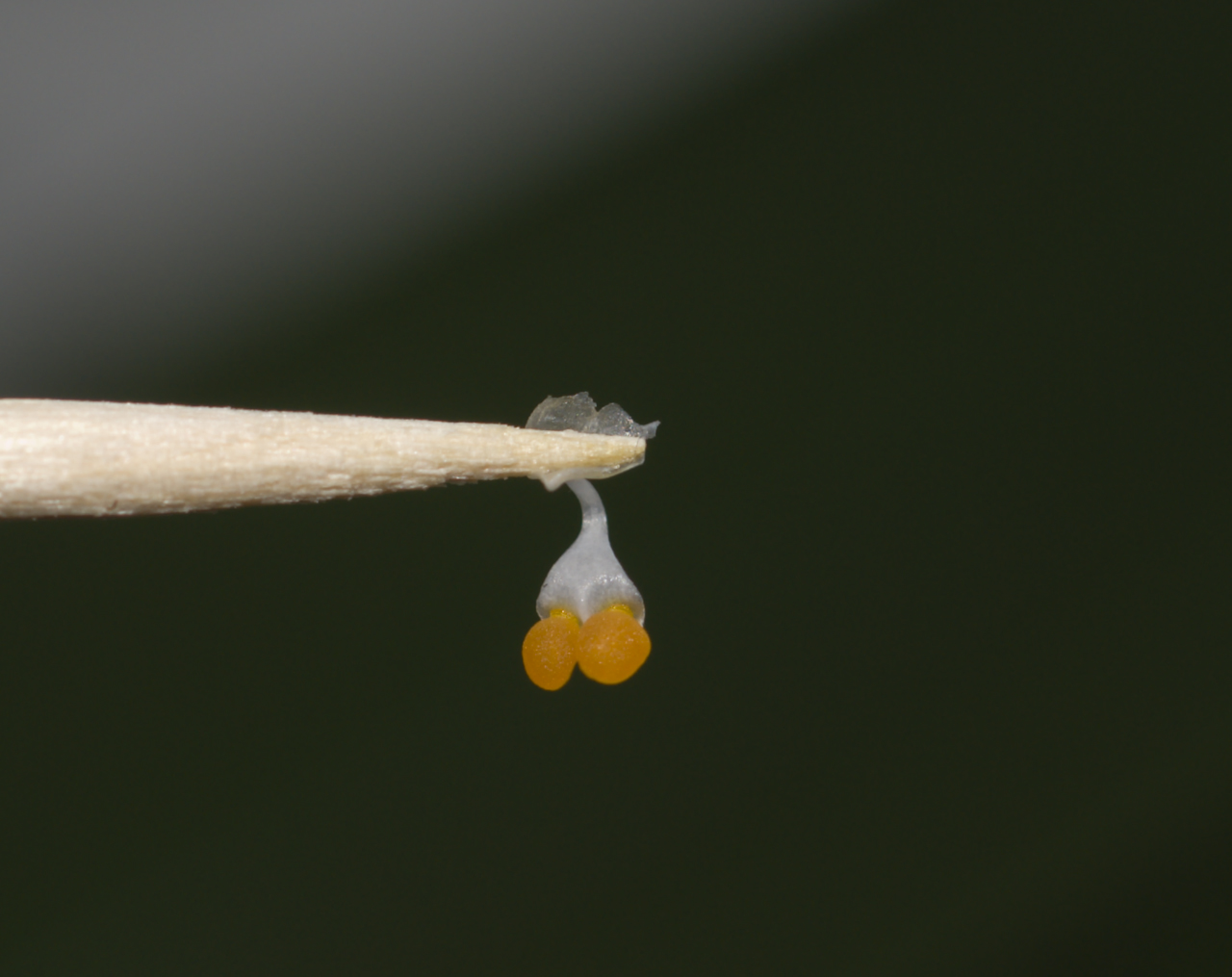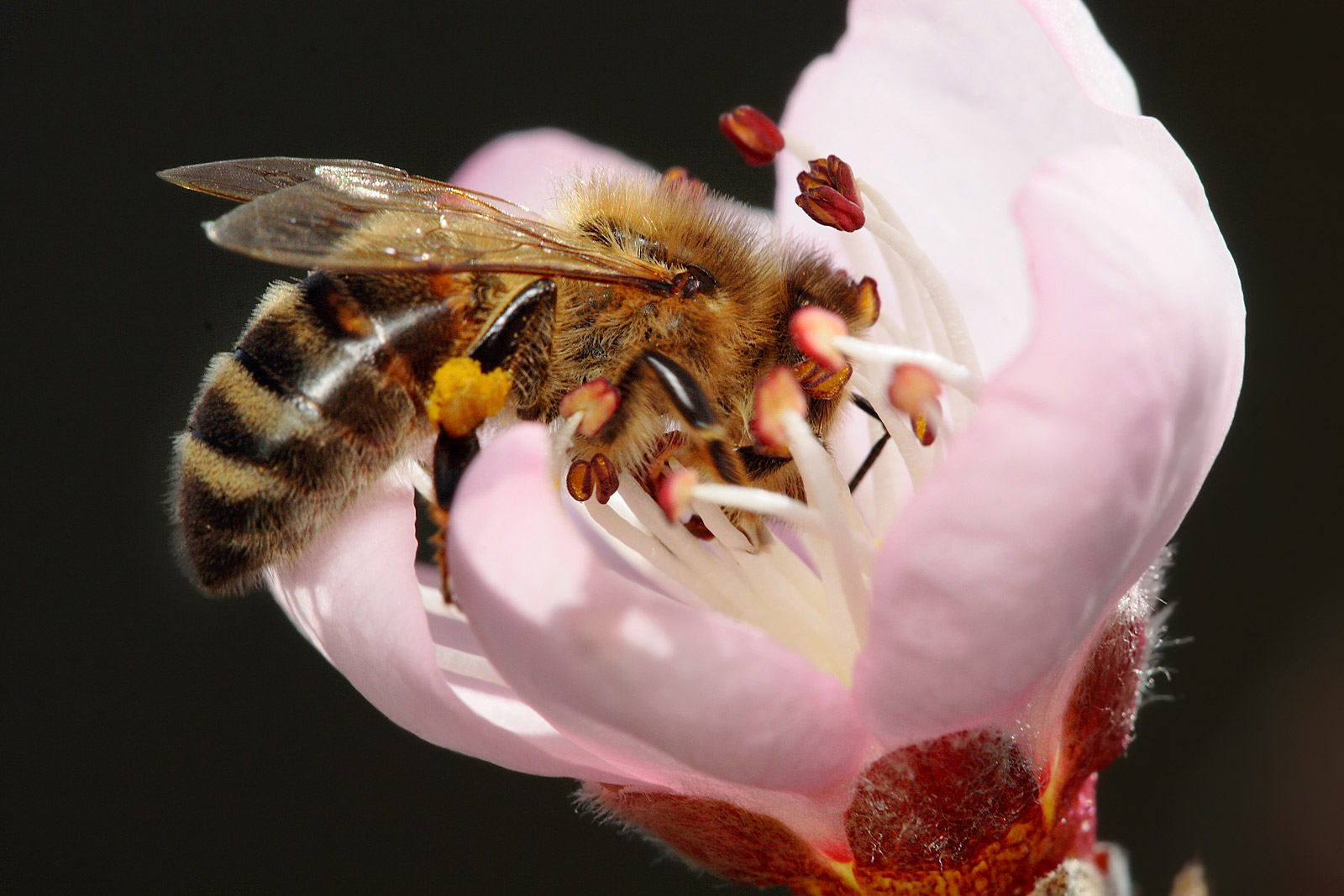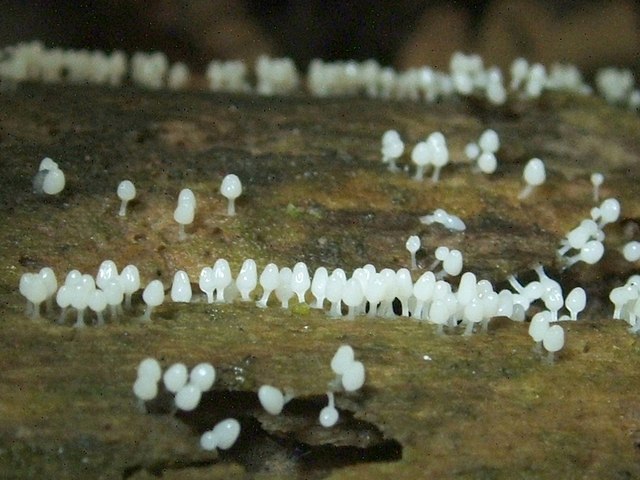|
Pollination Bags
Pollination bags, sometimes called crossing bags, isolation bags or exclusion bags, are containers made of various different materials for the purpose of controlling pollination for plants. Characteristics of pollination Bags Pollination bags are designed to fit well over the inflorescence or individual flowers of a plant type. The size, shape and strength of bag should ensure that there is no contact with flowers to avoid development of diseases and physical hindrances in seed development. The size of bag will vary with the size of inflorescence to be covered. Pollination bags may be 2D or 3D. The 3D bags have a gusset for expansion to avoid contact between the plant and the bag. Sometimes pollination bags may have a window to allow examination of inflorescence without removing the bag. Bags with a flap over the window, when provided, protects from strong sunlight. Most pollination bags are produced by general paper bag manufacturers which have branched out into providing pollinat ... [...More Info...] [...Related Items...] OR: [Wikipedia] [Google] [Baidu] |
Pollination
Pollination is the transfer of pollen from an anther of a plant to the stigma of a plant, later enabling fertilisation and the production of seeds, most often by an animal or by wind. Pollinating agents can be animals such as insects, birds, and bats; water; wind; and even plants themselves, when self-pollination occurs within a closed flower. Pollination often occurs within a species. When pollination occurs between species, it can produce hybrid offspring in nature and in plant breeding work. In angiosperms, after the pollen grain (gametophyte) has landed on the stigma, it germinates and develops a pollen tube which grows down the style until it reaches an ovary. Its two gametes travel down the tube to where the gametophyte(s) containing the female gametes are held within the carpel. After entering an ovum cell through the micropyle, one male nucleus fuses with the polar bodies to produce the endosperm tissues, while the other fuses with the ovule to produce the embryo. ... [...More Info...] [...Related Items...] OR: [Wikipedia] [Google] [Baidu] |
Barley
Barley (''Hordeum vulgare''), a member of the grass family, is a major cereal grain grown in temperate climates globally. It was one of the first cultivated grains, particularly in Eurasia as early as 10,000 years ago. Globally 70% of barley production is used as animal fodder, while 30% as a source of fermentable material for beer and certain distilled beverages, and as a component of various foods. It is used in soups and stews, and in barley bread of various cultures. Barley grains are commonly made into malt in a traditional and ancient method of preparation. In 2017, barley was ranked fourth among grains in quantity produced () behind maize, rice and wheat. Etymology The Old English word for barley was ', which traces back to Proto-Indo-European and is cognate to the Latin word ' "flour" (''see corresponding entries''). The direct ancestor of modern English ''barley'' in Old English was the derived adjective ''bærlic'', meaning "of barley". The first citation ... [...More Info...] [...Related Items...] OR: [Wikipedia] [Google] [Baidu] |
Paul Knuth
Paul Erich Otto Wilhelm Knuth (20 November 1854 in Greifswald – 30 October 1900 in Kiel) was a 19th-century German botanist and pollination ecologist. He studied chemistry and natural history at the University of Greifswald and obtained his doctorate degree in 1876. He then took up a career as "high school" (Realschule) teacher, first in Iserlohn in Westphalia and from 1881 in Kiel. Parallel with his teaching duties, he found time to study the flora of Schleswig-Holstein and the North Frisian Islands and meticulous studies of plant-pollinator interactions, which he published in his monumental work ''Handbuch der Blütenbiologie''Handbook of Flower Biology from 1898 and continued after his death by Otto Appel and Ernst Loew). From 1891 he suffered from illness. He was granted leave of absence to visit the botanic garden at Buitenzorg in Java, where he stayed for five months and did pollination studies. He returned to Kiel via Japan, California and New York New York most com ... [...More Info...] [...Related Items...] OR: [Wikipedia] [Google] [Baidu] |
Hand Pollination
Hand pollination, also known as mechanical pollination is a technique that can be used to pollinate plants when natural or open pollination is either undesirable or insufficient. Method This method of pollination is done by manually transferring pollen from the stamen of one plant to the pistil of another. The plant the pollen is taken from is called the pollen donor or pollen parent, while the plant receiving the pollen is the seed parent. Hand-pollination is often done with a cotton swab or small brush, but can also be done by removing the petals from a male flower and brushing it against the stigmas of female flowers, or by simply shaking flowers in the case of bisexual flowers, such as tomatoes. A special case are plants where the pollen are condensed in a mass called the pollinium, such as in orchids. In this case a small utensil is used to which the pollinia will stick. Reasons Common reasons for choosing this method include the lack of pollinators, keeping control of ... [...More Info...] [...Related Items...] OR: [Wikipedia] [Google] [Baidu] |
Fruit Tree Pollination
Pollination of fruit trees is required to produce seeds with surrounding fruit. It is the process of moving pollen from the anther to the stigma, either in the same flower or in another flower. Some tree species, including many fruit trees, do not produce fruit from self-pollination, so pollinizer trees are planted in orchards. The pollination process requires a carrier for the pollen, which can be animal, wind, or human intervention (by hand-pollination or by using a pollen sprayer). Cross pollination produces seeds with a different genetic makeup from the parent plants; such seeds may be created deliberately as part of a selective breeding program for fruit trees with desired attributes. Trees that are cross-pollinated or pollinated via an insect pollinator produce more fruit than trees with flowers that just self-pollinate. In fruit trees, bees are an essential part of the pollination process for the formation of fruit. Pollination of fruit trees around the world has been h ... [...More Info...] [...Related Items...] OR: [Wikipedia] [Google] [Baidu] |
Domestication
Domestication is a sustained multi-generational relationship in which humans assume a significant degree of control over the reproduction and care of another group of organisms to secure a more predictable supply of resources from that group. A broader biological definition is that it is a coevolutionary process that arises from a mutualism, in which one species (the domesticator) constructs an environment where it actively manages both the survival and reproduction of another species (the domesticate) in order to provide the former with resources and/or services. The domestication of plants and animals by humans was a major cultural innovation ranked in importance with the conquest of fire, the manufacturing of tools, and the development of verbal language. Charles Darwin recognized the small number of traits that made domestic species different from their wild ancestors. He was also the first to recognize the difference between conscious selective breeding (i.e. artificial se ... [...More Info...] [...Related Items...] OR: [Wikipedia] [Google] [Baidu] |
Cheating (biology)
Cheating is a term used in behavioral ecology and ethology to describe behavior whereby organisms receive a benefit at the cost of other organisms. Cheating is common in many mutualistic and altruistic relationships. A cheater is an individual who does not cooperate (or cooperates less than their fair share) but can potentially gain the benefit from others cooperating. Cheaters are also those who selfishly use common resources to maximize their individual fitness at the expense of a group. Natural selection favors cheating, but there are mechanisms to regulate it. Theoretical models Organisms communicate and cooperate to perform a wide range of behaviors. Mutualism (biology), Mutualism, or mutually beneficial interactions between species, is common in ecological systems. These interactions can be thought of "biological markets" in which species offer partners goods that are relatively inexpensive for them to produce and receive goods that are more expensive or even impossible fo ... [...More Info...] [...Related Items...] OR: [Wikipedia] [Google] [Baidu] |
Pollination
Pollination is the transfer of pollen from an anther of a plant to the stigma of a plant, later enabling fertilisation and the production of seeds, most often by an animal or by wind. Pollinating agents can be animals such as insects, birds, and bats; water; wind; and even plants themselves, when self-pollination occurs within a closed flower. Pollination often occurs within a species. When pollination occurs between species, it can produce hybrid offspring in nature and in plant breeding work. In angiosperms, after the pollen grain (gametophyte) has landed on the stigma, it germinates and develops a pollen tube which grows down the style until it reaches an ovary. Its two gametes travel down the tube to where the gametophyte(s) containing the female gametes are held within the carpel. After entering an ovum cell through the micropyle, one male nucleus fuses with the polar bodies to produce the endosperm tissues, while the other fuses with the ovule to produce the embryo. ... [...More Info...] [...Related Items...] OR: [Wikipedia] [Google] [Baidu] |
Hordeum Parodii
''Hordeum parodii'' is a species of barley native to Argentina, where it can be found in inland wetlands, coastal and supratidal lands. ''H. parodii'' is a small annual grass forming petite patches of thin, hairy leaves and erect stems to about 10 cm height. First described by Guillermo Covas, from whom it received its current name. ''H. patagonicum'' is included in the same family as grass. No subspecies are listed in the Catalog of Life.Roskov Y., Kunze T., Orrell T., Abucay L., Paglinawan L., Culham A., Bailly N., Kirk P., Bourgoin T., Baillargeon G., Decock W., The Wever A., Didžiulis V. (ed.) (February 15, 2014)"Species 2000 & ITIS Catalog of Life: 2014 Annual Checklist."Species 2000: Reading, UK. Accessed 22 February 2019 References parod Parod ( he, פָּרוֹד) is a kibbutz in northern Israel. Located in the Upper Galilee near Safed, it falls under the jurisdiction of Merom HaGalil Regional Council. In it had a population of . History The community was f ... [...More Info...] [...Related Items...] OR: [Wikipedia] [Google] [Baidu] |
Polypropylene
Polypropylene (PP), also known as polypropene, is a thermoplastic polymer used in a wide variety of applications. It is produced via chain-growth polymerization from the monomer propylene. Polypropylene belongs to the group of polyolefins and is partially crystalline and non-polar. Its properties are similar to polyethylene, but it is slightly harder and more heat-resistant. It is a white, mechanically rugged material and has a high chemical resistance. Bio-PP is the bio-based counterpart of polypropylene (PP). Polypropylene is the second-most widely produced commodity plastic (after polyethylene). In 2019, the global market for polypropylene was worth $126.03 billion. Revenues are expected to exceed US$145 billion by 2019. The sales of this material are forecast to grow at a rate of 5.8% per year until 2021. History Phillips Petroleum chemists J. Paul Hogan and Robert Banks first demonstrated the polymerization of propylene in 1951. The stereoselective polymerizat ... [...More Info...] [...Related Items...] OR: [Wikipedia] [Google] [Baidu] |
Polyethylene
Polyethylene or polythene (abbreviated PE; IUPAC name polyethene or poly(methylene)) is the most commonly produced plastic. It is a polymer, primarily used for packaging ( plastic bags, plastic films, geomembranes and containers including bottles, etc.). , over 100 million tonnes of polyethylene resins are being produced annually, accounting for 34% of the total plastics market. Many kinds of polyethylene are known, with most having the chemical formula (C2H4)''n''. PE is usually a mixture of similar polymers of ethylene, with various values of ''n''. It can be ''low-density'' or ''high-density'': low-density polyethylene is extruded using high pressure () and high temperature (), while high-density polyethylene is extruded using low pressure () and low temperature (). Polyethylene is usually thermoplastic, but it can be modified to become thermosetting instead, for example, in cross-linked polyethylene. History Polyethylene was first synthesized by the German chemis ... [...More Info...] [...Related Items...] OR: [Wikipedia] [Google] [Baidu] |
Polyester
Polyester is a category of polymers that contain the ester functional group in every repeat unit of their main chain. As a specific material, it most commonly refers to a type called polyethylene terephthalate (PET). Polyesters include naturally occurring chemicals, such as in plants and insects, as well as synthetics such as polybutyrate. Natural polyesters and a few synthetic ones are biodegradable, but most synthetic polyesters are not. Synthetic polyesters are used extensively in clothing. Polyester fibers are sometimes spun together with natural fibers to produce a cloth with blended properties. Cotton-polyester blends can be strong, wrinkle- and tear-resistant, and reduce shrinking. Synthetic fibers using polyester have high water, wind and environmental resistance compared to plant-derived fibers. They are less fire-resistant and can melt when ignited. Liquid crystalline polyesters are among the first industrially used liquid crystal polymers. They are used for th ... [...More Info...] [...Related Items...] OR: [Wikipedia] [Google] [Baidu] |





